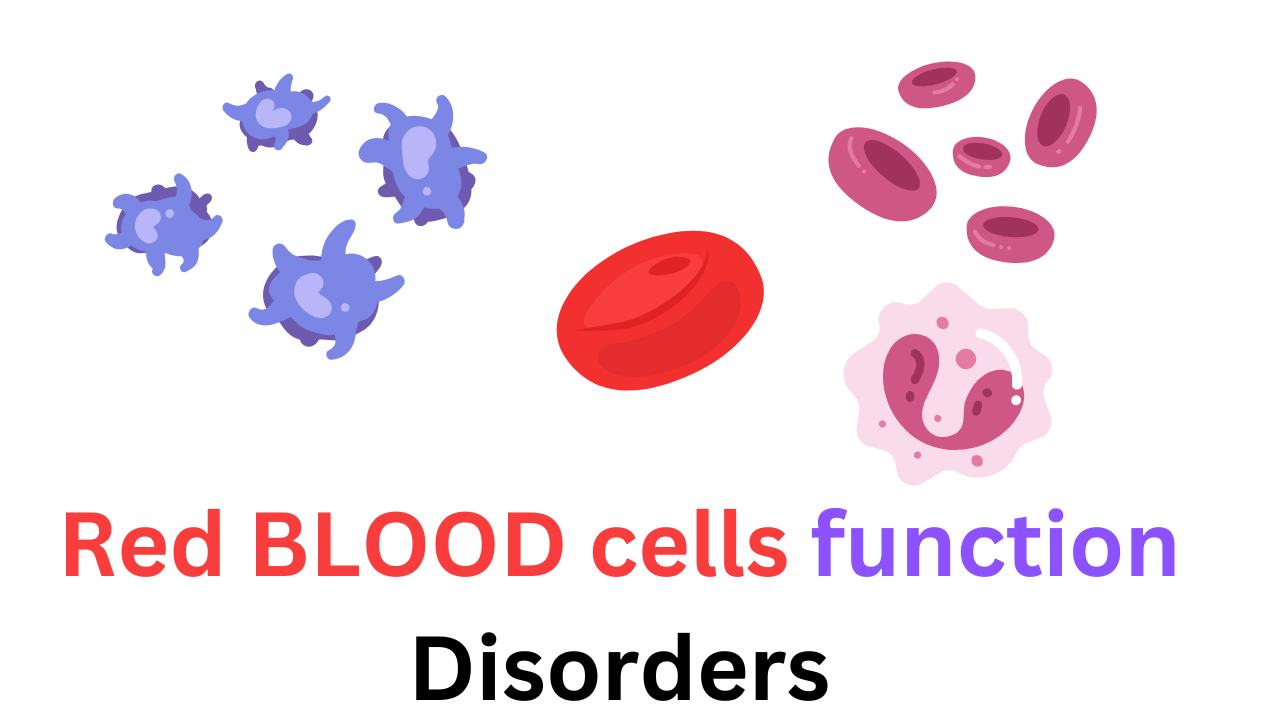Red blood cells (RBCs), also known as erythrocytes, are among the most crucial components of our blood. They transport oxygen from the lungs to every cell in the body.
They also carry carbon dioxide back to the lungs for exhalation. Without healthy red blood cells, our body can’t work properly.
Read more: Iron rich food for healthy lifestyle
What Are Red Blood Cells?
Red blood cells are disc-shaped cells without a nucleus, packed with hemoglobin, a protein that binds oxygen. They make up about 40–45% of our blood volume and have an average lifespan of 120 days.
Key Characteristics of RBCs:
- Shape: Biconcave disc
- Lifespan: Around 120 days
- Produced in: Bone marrow
- Main component: Hemoglobin
Functions of Red Blood Cells
The primary role of RBCs is oxygen transport, but they also play several other roles in maintaining overall health.
- RBCs carry oxygen from the lungs to body tissues using hemoglobin.
- After delivering oxygen, RBCs carry carbon dioxide back to the lungs to be exhaled.
- Red blood cells help keep the acid-base balance in the blood.
- RBCs help in the distribution of nutrients throughout the body.
Normal Red Blood Cell Count
The normal RBC count varies by age and gender:
- Men: 4.7 to 6.1 million cells/µL of blood
- Women: 4.2 to 5.4 million cells/µL
- Children: 4.1 to 5.5 million cells/µL
Low or high RBC counts can show health issues that need attention.
Common Red Blood Cell Disorders
1. Anemia (Low RBC Count)
Anemia occurs when the body doesn’t have enough healthy red blood cells. Common causes include iron deficiency, chronic diseases, or blood loss.
Symptoms: Fatigue, pale skin, shortness of breath.
2. Polycythemia (High RBC Count)
This is when there is an excessive number of RBCs, often due to bone marrow disorders or high altitude adaptation.
3. Sickle Cell Anemia
A genetic disorder where RBCs become crescent-shaped, leading to poor oxygen delivery.
Read more : Healthy Lifestyle Tips for a Better and Successful Life
Causes of Low Red Blood Cell Count
- Nutritional Deficiencies: Iron, Vitamin B12, Folate
- Bone Marrow Problems: Aplastic anemia, leukemia
- Chronic Diseases: Kidney disease, cancer
- Blood Loss: Injuries, heavy menstruation
How to Increase Red Blood Cell Count Naturally
1. Iron-Rich Foods
Iron is essential for hemoglobin production. Include:
- Red meat, liver
- Leafy greens (spinach, kale)
- Legumes (beans, lentils)
2. Vitamin B12 & Folate
These vitamins help in RBC formation. Sources include eggs, dairy, fortified cereals, and leafy vegetables.
3. Vitamin C
Improves iron absorption. Include citrus fruits, bell peppers, and strawberries.
4. Regular Exercise
Boosts blood circulation and oxygen delivery.
5. Avoid Alcohol & Smoking
Both negatively affect RBC production.
FAQs
1. What is the main role of red blood cells?
RBCs transport oxygen from the lungs to body tissues and remove carbon dioxide.
2. How long do red blood cells live?
About 120 days in the bloodstream.
3. What happens if your RBC count is low?
You may develop anemia, leading to fatigue, weakness, and shortness of breath.
